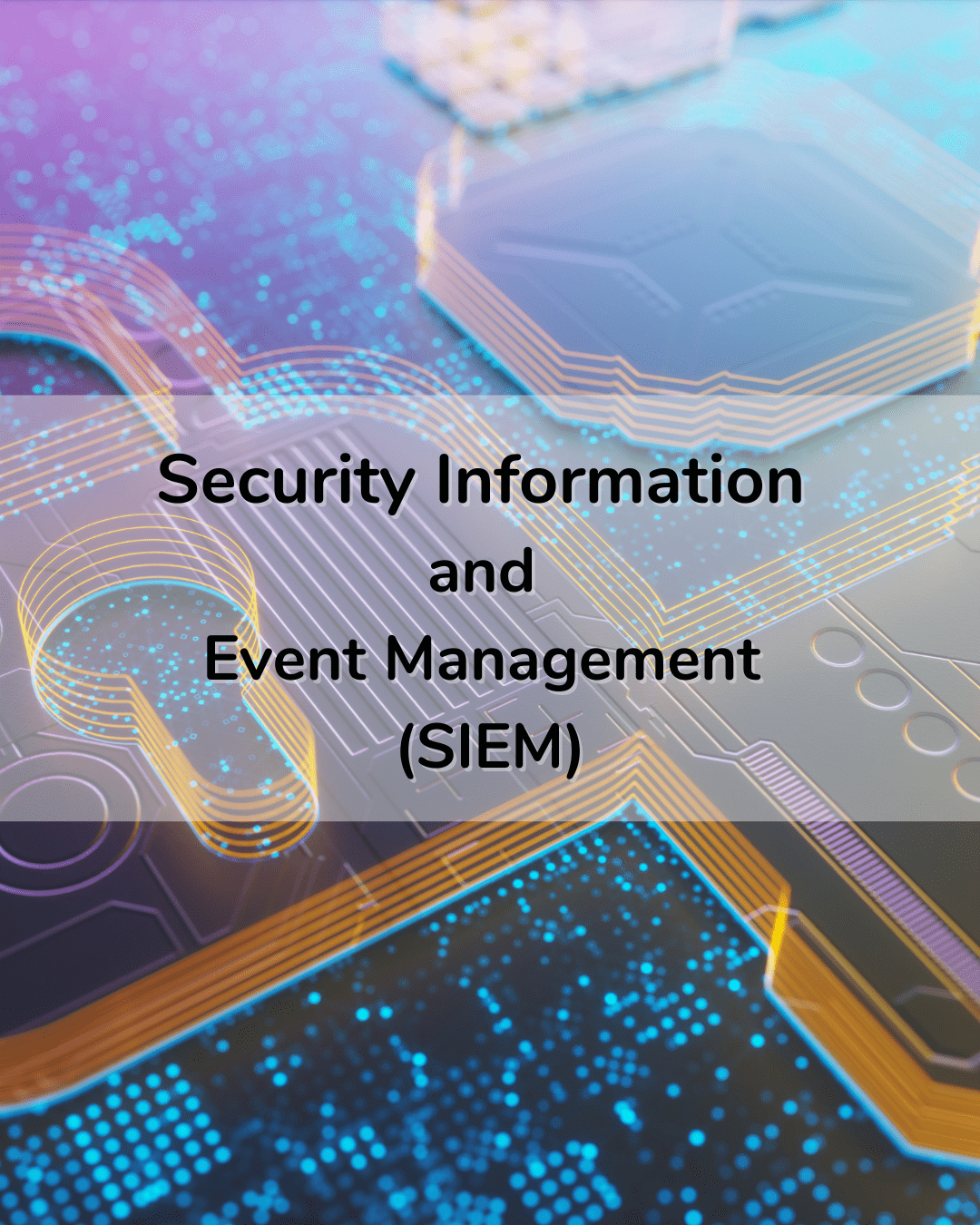How PTaaS (Penetration Testing as a Service) Keeps Your Business Safe

How PTaaS (Penetration Testing as a Service) Keeps Your Business Safe Article Publish Date: Cyber threats affect all businesses, not just large ones. Penetration Testing as a Service (PTaaS) offers expert security assessments to strengthen defences against these threats. Here’s a breakdown of PTaaS, why it matters, and how it could be the cybersecurity solution you’ve been looking for. What is PTaaS? PTaaS offers continuous penetration testing to enhance protection against hackers, rather than infrequent assessments. It includes regular checks and real-time updates. A team of ethical hackers helps keep your business secure. How PTaaS Works to Keep You Secure Simulating Real Attacks: PTaaS tests your systems the way real hackers would, exposing vulnerabilities before they’re exploited. Meeting Compliance Standards: Industries often have strict security rules. PTaaS ensures your constant adherence to compliance standards. Quick Action: Unlike traditional testing, which might take weeks to report issues, PTaaS flags problems instantly for immediate fixes. Future-Proofing: PTaaS adapts to the latest threats. This guarantees you are safeguarded against evolving threats Why PTaaS is Essential for Businesses Hackers never rest, and your defences shouldn’t either. PTaaS offers businesses the tools and support they need to protect their data and systems, with several key benefits: 24/7 Protection: Continuous monitoring ensures you’re always ahead of potential threats. Cost-Effective: PTaaS offers expert protection without the high costs of a full-time in-house team. Real-Time Insights: A dashboard shows your security status in real-time. It promptly notifies you of any issues. Expert Support on Demand: Cybersecurity experts are available to help you when you need advice or a solution. Scalable for Growth: As your enterprise expands, PTaaS scales alongside you. It keeps your new systems, networks, and employees safe. Extra Perks of PTaaS: Customised Testing: Focus on specific areas like your website or cloud infrastructure. Minimised Downtime: Quick fixes mean less disruption to your business. Trust Building: Clients and stakeholders appreciate strong security measures. This helps improve your reputation. Collaborative Tools: PTaaS makes it easy for your IT and security teams to work together. Let Us Help You Stay Safe: At Trustack, we simplify cybersecurity. We design our PTaaS service for businesses of all sizes. It helps you stay ahead of hackers without spending too much. What we offer: Real-Time Monitoring: Always know where you stand with live security updates. Affordable Pricing: Flexible plans designed to fit your budget. Expert Support: Certified professionals ready to assist you whenever needed. Get in Touch! Protecting your business has never been easier. Contact us today for a free consultation and discover how PTaaS can give you peace of mind. Whether you’re a startup or a large enterprise, we’ve got the tools and expertise to keep you secure. FAQs About PTaaS and Our Services What makes PTaaS different from traditional pen testing?PTaaS offers ongoing protection, real-time updates, and flexible solutions. This approach is better than the yearly model of traditional testing Can small businesses afford PTaaS? Sure! PTaaS is made to be affordable. It provides enterprise-level protection for a much lower price. How does PTaaS ensure compliance? PTaaS follows industry standards and regulations. This helps you stay compliant without any hassle. Do I need technical knowledge to use PTaaS?No, we take care of the technical side. We provide clear reports and helpful advice for your team. Don’t Wait Until It’s Too Late! Cybercriminals aren’t reducing their pace, but with PTaaS, your speed won’t diminish either. Secure your business, protect your reputation, and focus on what matters – growing your business. Get started today – because your business deserves the best defence. Contact Us Get your business on the front foot
How Artificial Intelligence Can Revolutionise Your Business and Improve Cybersecurity

How Artificial Intelligence Can Revolutionise Your Business and Improve Cybersecurity Article Publish Date: Artificial Intelligence (AI) is transforming the way businesses operate. AI has become an important tool in our fast-paced digital world. It helps simplify everyday tasks and provides strong protection against threats. However, with great power comes great responsibility – AI also introduces significant risks if not used with proper safeguards. Let’s explore the benefits of AI, the risks it poses, and how businesses can strike a balance to harness its full potential. Why They Matter Proactive Risk Identification – Security evaluations identify weaknesses before they can be exploited. This helps prevent expensive security problems and reduces downtime. Protection of Sensitive Data and Compliance – Routine inspections guarantee the security of data and adherence to regulations, preserving client confidence and preventing legal sanctions. Reputation and Competitive Advantage – Audits show a commitment to security. They improve brand image and give a competitive edge. This builds trust with customers and partners. What Can AI Do for Your Business? AI leverages advanced computer systems to perform tasks traditionally requiring human intelligence, such as learning, problem-solving, and decision-making. For businesses, AI offers several key advantages: Automation of Repetitive Tasks: AI can handle repetitive tasks, freeing up employees to focus on strategic activities and improving customer service efficiency. Data Analysis and Insights: AI analyses large datasets to identify trends, enhancing product improvement, customer behaviour prediction, and decision-making for businesses. Personalisation: With AI, businesses can tailor customer experiences, offering personalised recommendations and targeted marketing campaigns. Cost Savings: By enhancing efficiency, AI reduces operational costs and delivers a strong return on investment. AI and Cybersecurity: A Double-Edged Sword AI has emerged as a game-changer in cybersecurity, offering robust tools to detect, prevent, and respond to threats. However, it is not without its vulnerabilities. Benefits of AI in Cybersecurity: Detecting Threats and Unusual Patterns: AI monitors data for anomalies, enabling businesses to identify and mitigate cyber risks. Preventing Breaches: By proactively identifying vulnerabilities and simulating attacks, AI helps businesses stay ahead of potential threats. Rapid Response: AI can isolate systems and alert IT teams in real time, enabling swift action against emerging threats. Continuous Learning: AI systems enhance their threat detection and response capabilities through a combination of actual and simulated interactions. Risks of Implementing AI in Business While AI offers substantial benefits, its implementation introduces unique risks that businesses must address: General Risks of Large Language Models (LLMs): Hallucination: AI models can generate incorrect or misleading information, leading to poor decision-making. Bias: Should AI be trained on prejudiced data, it can magnify and spread existing biases, potentially damaging business processes and reputation. Privacy Concerns: AI systems frequently need access to vast datasets, which brings up worries about the management and storage of confidential data Security Risks of AI Adoption: Data Leakage: AI tools, particularly cloud-based ones, may expose sensitive business data to external threats. Insider Threats: Improper use of AI within an organisation could lead to unintentional data breaches. Dependence on AI: Excessive dependence on AI without adequate supervision can lead to weaknesses if systems malfunction or are tampered with. These risks underscore the need for businesses to implement AI responsibly, with comprehensive safeguards in place. Balancing Risks and Benefits Despite its risks, AI remains an indispensable tool for businesses. The key lies in adopting AI with a strategic and security-conscious approach: Conduct Risk Assessments: Evaluate potential risks before introducing AI into your operations. Implement Safeguards: Establish policies, encrypt data, and train employees to use AI responsibly. Consult Experts: Collaborating with cybersecurity experts guarantees secure and efficient integration of AI solutions. Conclusion AI offers tremendous opportunities for businesses, from enhancing productivity to bolstering cybersecurity. However, the benefits come with significant risks that require careful management. By understanding and addressing these risks, businesses can safely unlock AI’s potential to revolutionise their operations. AI can transform your business, but it must be implemented securely. Consult with our team of cybersecurity experts to ensure your AI adoption is safe, strategic, and successful. Contact Us Get your business on the front foot
The Importance of Regular Security Audits

The Importance of Regular Security Audits Article Publish Date: What Are Security Audits? A security audit is a thorough check of an organisation’s information systems, policies, and procedures. It aims to find weaknesses and ensure compliance with security standards. Security audits evaluate current measures, identify vulnerabilities, and organisations can conduct them internally, externally, or for compliance purposes. Why They Matter Proactive Risk Identification – Security evaluations identify weaknesses before they can be exploited. This helps prevent expensive security problems and reduces downtime. Protection of Sensitive Data and Compliance – Routine inspections guarantee the security of data and adherence to regulations, preserving client confidence and preventing legal sanctions. Reputation and Competitive Advantage – Audits show a commitment to security. They improve brand image and give a competitive edge. This builds trust with customers and partners. Types of Security Audits Internal audits check security within the organisation. External audits offer unbiased evaluations. Compliance audits ensure that rules are followed. All these audits are important for keeping and improving an organisation’s security. Key Components of a Security Audit Risk Assessment – A risk assessment identifies threats and their impacts, guiding organisations in prioritising security initiatives. Policy Review – A security audit checks policies to ensure they follow standards and regulations. It focuses on data protection and managing risks. Regular updates to policies are essential to address new threats and maintain compliance with evolving government and industry standards. System Assessment – Assessing an organisation’s IT infrastructure identifies vulnerabilities in networks, servers, and applications, including firewalls and access controls. Employee Training and Awareness – Security audits and training can cut the risk of data breaches by almost 50%. They can also lower costs by up to 30%. Most breaches, about 95%, happen because of human error. Best Practices for Conducting Security Audits Establish a Regular Schedule Conducting security audits regularly—such as annually, semi-annually, or quarterly – will help organisations stay proactive in managing their security posture. Engage Qualified Professionals Hiring qualified security professionals or consultants for external audits offer an unbiased view. They also bring specialised knowledge to the audit process. Document Findings and Action Plans Thorough documentation of audit findings, including identified vulnerabilities and recommended actions, is crucial for tracking improvements and ensuring accountability. Follow Up on Recommendations After finishing a security audit, it’s important to follow up on the recommendations. Make sure to fix any issues quickly to reduce risks. How Trustack Can Help At Trustack, we offer a free external audit scan. This scan looks for external risks to help businesses find weaknesses. This helpful service provides insights into your security and guides you on how to improve it. Don’t leave your business exposed! Claim your FREE external audit Scan NOW to reveal hidden threats before hackers strike. One quick scan could save your business Investing in Cyber Essentials enables organisations to safeguard their assets and provide assurance to their clients. This strategic approach significantly enhances competitive edge in the ever evolving digital landscape. Free external audit Get your business on the front foot
Incident Response Planning: What Every Business Should Know

Incident Response Planning: What Every Business Should Know Article Publish Date: What is an Incident Response Plan? An Incident Response Plan (IRP) outlines how organisations identify, manage, and recover from cybersecurity incidents, aiming to minimise impact, reduce downtime, and protect reputation. Cybersecurity threats are increasing. Every business, no matter its size, faces the risk of a security breach. Preparing for these incidents is crucial to minimising damage and ensuring smooth recovery. An Incident Response Plan (IRP) is an important tool for preparation. It outlines the steps a business will take during a cyber threat. In Q3 2024, global cyber attacks rose 75%, with healthcare incidents up 88%, highlighting urgent cybersecurity needs. Let’s break down what an IRP is, why it’s essential, and how you can build a strong, effective plan for your organisation. Why is Having an Incident Response Plan Important? Businesses must prioritise incident response plans to mitigate risks and protect assets amid a 75% increase in cyber attacks. Minimises Damage: With a predefined set of actions, you can react quickly, stopping the incident before it causes more harm.Reduces Downtime: A clear response process ensures systems can be restored efficiently, minimising the disruption to business operations.Protects Reputation: Swift and professional handling of incidents shows customers and stakeholders that the organisation takes cybersecurity seriously.Ensures Compliance: Many industries have strict regulatory requirements for handling breaches. Having an IRP helps meet these standards and avoid legal consequences.Improves Learning and Prevention: By reflecting on incidents and refining your plan, you continuously strengthen your organisation’s defences. Key Components of an Incident Response Plan A comprehensive Incident Response Plan (IRP) includes preparation, identification, containment, eradication, recovery, and post-incident review. It involves creating a response team. The team will recognise incidents and isolate affected systems. They are responsible for eliminating breaches and restoring functionality. Finally, they will update protocols based on lessons learned. This ensures better responses in the future. Steps to Develop a Robust Incident Response Plan Building a strong incident response plan doesn’t happen overnight. It requires careful planning, regular testing, and continuous updates. Here are the steps to develop a comprehensive and effective IRP: 1. Assess Your Risks – Identify and understand your organisation’s specific threats to effectively shape your security plan. 2. Define Your Team – Form a cross-functional incident response team with defined roles from IT, legal, communications, and management for breach situations. 3. Set Up Detection Tools – Utilise monitoring tools and automated detection systems to swiftly identify potential breaches and reduce human error. 4. Create Incident Categories – Implement a severity classification system for incidents to prioritise responses and optimise resource allocation. 5. Develop Clear Protocols – Develop clear, step-by-step incident response protocols for each phase to ensure accessibility during emergencies. 6. Test Your Plan – Regular drills and simulations are essential to ensure team preparedness and system effectiveness against real-world threats. 7. Update and Refine – Regularly update your incident response plan to address evolving cyber threats and incorporate lessons from past incidents. Why is Arctic Wolf Essential for Our Clients? Proactive Threat Detection: Arctic Wolf helps us watch your network in real time. It finds weaknesses before they can be exploited.Improved Visibility: The platform enhances visibility in on-premises and cloud environments, improving threat detection and response efficiency.Continuous Compliance: Arctic Wolf ensures compliance and security by monitoring systems for unauthorised access and unusual activity.24/7 Managed Detection and Response: Arctic Wolf’s SOC teams operate 24/7 to manage threats and quickly reduce risks. Incorporating Arctic Wolf enhances client protection and preparedness for security challenges. Conclusion Trustack combines proactive threat detection with expert response strategies. This helps your business prepare for incidents and prevent future threats. In doing so, Trustack protects your long-term success. Is your business ready to face a cyber incident? Contact Trustack today to create a custom incident response plan and ensure you’re prepared for any challenge! Contact us Get your business on the front foot
What is a Security Information and Event Management (SIEM) System?

What is a Security Information and Event Management (SIEM) System? Article Publish Date: Introduction to SIEM A security monitoring solution collects and analyses security data from an organisation’s network. It helps find threats and respond to breaches quickly, improving overall cybersecurity efforts. How Does SIEM Work? At its core, this cybersecurity tool performs two critical functions: Security Information Management (SIM): The monitoring system collects and stores log data from different devices, applications, and systems within an organisation. This enables long-term storage and analysing for compliance, audits, and forensic investigations. Security Event Management (SEM): The system actively analyses real-time event data, looking for patterns, anomalies, and indicators of malicious activity. When it detects a potential threat, it triggers alerts so that security teams can respond quickly. Together, these functions help a SIEM solution improve the visibility and security of an organisation’s network. They do this by centralising data evaluation and responding to suspicious activities. Benefits of SIEM 1. Centralised Monitoring and Visibility – A security event management system centralises monitoring. This helps security teams track all activities in one place, improving risk detection and removing potential blind spots for attackers. 2. Advanced Threat Detection – These systems use advanced analytics to find suspicious activities in real time. This helps security teams spot potential threats and stop cyberattacks. 3. Faster Incident Response – With SIEM in place, organisations enhance threat detection and enable rapid incident response through automation, minimising damage and preventing escalation of security breaches. 4. Compliance and Reporting – These solutions automate logging and reporting, helping businesses follow rules like HIPAA and GDPR. This helps avoid fines and builds trust in data protection. 5. Forensic Analysis and Investigation – Security monitoring systems are important for investigating security incidents, providing detailed records that help find breaches, assess impacts, and improve future defences. Enhancing Security Posture with SIEM Security information and event management solutions enhance security through real-time monitoring, automate tasks for efficiency, and ensure compliance, reducing vulnerabilities and enabling effective threat response. Conclusion Strengthening Security with SIEMSIEM solutions are more than just monitoring tools; they’re a critical component of modern cybersecurity strategies.By providing centralised visibility, advanced threat detection, automated incident response, and seamless compliance reporting, these systems help organisations stay one step ahead of cybercriminals. Ready to strengthen your security defences with a comprehensive SIEM solution?Contact Trustack today to learn how we can help you implement effective security measures tailored to your business needs! Contact us Get your business on the front foot
Phishing Scams: How to Recognise and Avoid Them

Phishing Scams: How to Recognise and Avoid Them Article Publish Date: If you have never heard of phishing or don’t feel confident that you could spot it, this guide is for you. This article will help you learn what phishing is, how to recognise it, and how to protect yourself and your business from these scams. What is phishing? Phishing is an online scam where attackers impersonate trusted entities to steal personal information. It can lead to identity theft and financial loss. Recognising phishing tactics is essential for protection against financial risks and other serious security threats. More than 90% of cyberattacks involve phishing. Alarmingly, 36% of data breaches begin with a phishing email. This shows how important it is to spot and avoid these scams. It Comes in Different Forms When scammers call or send voice messages, people call this Vishing (Voice Phishing). They pretend to be real organisations, like banks or government agencies. Their goal is to get sensitive information from you. Vishing involves phone calls to deceive individuals into revealing sensitive information such as passwords or credit card numbers. These tactics can lead to compromised accounts and financial loss, as individuals may unknowingly give away valuable personal information. When scammers send fake text messages, people call this Smishing (SMS Phishing). These messages ask victims to click on harmful links or share personal information. Messages from trusted institutions may create urgency by claiming account issues or prize winnings. These messages often look like they come from trusted institutions. They create a sense of urgency by claiming there are issues with an account. Sometimes, they even announce fake prize winnings to encourage quick responses. How to Recognise Phishing Scams Phishing scams can be tricky to spot, as scammers are becoming more sophisticated. However, there are some telltale signs to look out for. Here are several tips for identifying phishing attempts: 1. Check the Sender’s Email Address – Phishing emails look like real ones. Always check the sender’s email, especially if it is unexpected.2. Look for Poor Grammar and Spelling – Unprofessional emails with mistakes can suggest phishing attempts. Reputable organisations always make sure their communication is clear.3. Beware of Urgent Requests – Scammers create urgency and fear in phishing emails, calls (vishing), or texts (smishing). They want you to act quickly, like clicking links or sharing personal information.4. Hover Over Links – Before you click on links, hover over them to check the URL. Stay away from suspicious or shortened links that don’t match the sender. This can help you avoid phishing and smishing attempts. 5. Be Cautious of Unexpected Calls – If you receive an unsolicited call asking for sensitive information, be wary. Vishing scammers often act like they are from real organisations. You can protect yourself by verifying their identity through official contact methods. 6. Look for Unusual Attachments – Do not open email attachments you did not expect. This is especially true for strange file types. They may contain harmful software.7. Requests for Sensitive Information – Legitimate companies do not ask for sensitive information through email, text, or over the phone. Be cautious of phishing, smishing, and vishing scams.8. Educating Employees to Prevent Phishing Attacks – Training and practice on phishing can greatly lower the risks of data breaches and financial losses for employees. Technical Measures to Prevent Phishing Combining employee awareness with technical defences is essential to enhance protection against phishing attacks. 1. Email Filtering – Implementing advanced email filters can effectively block phishing emails before they reach your inbox.2. Web Filtering – Web filtering software blocks access to malicious websites, protecting users from phishing and malware threats.3. Multi-Factor Authentication (MFA) – Multi-factor authentication enhances security by requiring multiple verification methods, making account access harder for attackers.4. Anti-Phishing Software – Cybersecurity solutions with anti-phishing features help find and stop phishing attempts. This improves protection against attacks.5. Regular Software Updates – Regularly update systems and software to protect against cybercriminals exploiting vulnerabilities for phishing attacks.6. Voice and Text Monitoring Tools – Using tools to watch for suspicious phone calls (vishing) or text messages (smishing) can help find and stop scams. This can protect users before they experience any effects. Conculsion Protect your business from phishing, vishing, and smishing with Trustack. We offer employee training, email filtering, and multi-factor authentication to keep your company secure. Reach out today! Get your business on the front foot
Navigating Cloud Migration with Microsoft Azure: Transforming Business Operations for the Future

Navigating Cloud Migration with Microsoft Azure: Transforming Business Operations for the Future Article Publish Date: The Strategic Role of Cloud Transformation The cloud is now a catalyst for business transformation, essential for staying competitive. Effective cloud migration requires more than moving data; it demands a clear plan that addresses cybersecurity, company culture, risks, costs, and ROI. Microsoft Azure offers a secure, robust platform for businesses starting their cloud journey, enabling them to optimise operations, empower employees, improve customer experiences, and drive innovation. Learn from cloud experts about key success factors in cloud migration and how Azure supports seamless digital transformation. Microsoft’s Cloud-Led Transformation: A Case Study One of the most compelling examples of cloud migration success is Microsoft’s internal transformation. By adopting a “born in the cloud” mindset, Microsoft has reimagined its business processes, empowering employees, enhancing customer engagement, optimising operations, and transforming product offerings. This shift has enabled the company to leverage the full potential of the cloud and maintain its leadership position in the tech industry. A key lesson from Microsoft’s experience is that cloud migration isn’t just about technology. It’s about rethinking how an organisation operates at every level. The company’s ability to harness the cloud’s benefits stems from its commitment to continuously evolving its processes and systems to align with the opportunities the cloud offers. Cloud Opportunities, Strategies, and Solutions Cloud computing is transforming industries across the board. Investments in next-generation cloud solutions are reshaping how businesses manage data, develop applications, secure networks, and scale growth. As part of your cloud transformation strategy, leveraging the power of Microsoft Azure can help you stay ahead of the curve by addressing these critical aspects. Azure offers a broad range of cloud services, including data storage, virtual machines, AI tools, and advanced analytics. With its comprehensive security features and global infrastructure, Azure allows businesses to scale effortlessly while maintaining control over their data and applications. Additionally, Azure’s ability to integrate with existing IT systems makes the transition to the cloud smoother and more cost-effective. Driving Digital Transformation Trustack provides insights into how cloud computing can revolutionise operations, enhance customer experiences, and secure networks. Using our guidelines we can show you how the Azure ecosystem is designed to help organisations amplify the latest trends and strategies. Whether you’re already in the cloud and unsatisfied or thinking of migrating, we have solutions shaping the future of cloud computing. Navigating Cloud Challenges While the cloud offers immense benefits, it also presents a set of challenges that businesses must address. Some of the most common issues include managing data quality, securing endpoints, and building an effective cloud architecture. By acknowledging these pain points and working with us, we can provide actionable solutions empowering you to overcome obstacles and achieve successful cloud migrations. Trustack’s experience with cloud technologies gives you the best resources for handling the special security needs of cloud environments and helps you manage cloud data effectively. Maximising Cloud Benefits with Microsoft Azure The future of business operations lies in the cloud, and Microsoft Azure offers a powerful platform to drive digital transformation. By addressing critical factors such as cybersecurity, employee culture, and potential risks, businesses can maximise their cloud investments and achieve long-term success. As organisations continue to invest in next-generation cloud solutions, utilising Trustack knowledge will allow you to stay at the forefront of innovation and growth. Maximise your business operations and master the cloud with Trustack’s expertise and experience. Contact us to learn more! Get your business on the front foot
MFA: Why It Matters for Your Business

MFA: What It Is and Why It Matters for Your Business Article Publish Date: What is MFA? MFA stands for Multi-Factor Authentication. It is a security process that asks users to provide two or more verification factors. This is needed to access a system, application, or online account. The purpose of MFA is to add an extra layer of security beyond just a username and password. Multi-factor authentication can block 99.9% of automated cyber attacks, making it one of the simplest yet most effective defenses against hackers. How does MFA Work? When logging in, users typically go through the following steps: Username and Password: First, the user enters their standard login credentials. Additional Verification: After entering the username and password, the system will require another form of verification. This could be: Something you have: A mobile device that receives a text message with a code, a security token, or a smart card. Something you are: Biometric data such as fingerprints, facial recognition, or voice recognition. By requiring multiple forms of verification, MFA makes it much harder for unauthorised users to access accounts or systems. How can MFA Improve Your Business? Enhanced Security: MFA needs several ways to verify identity. This makes it hard for anyone to access your account without permission, even if they have your password. Data Protection: Safeguards sensitive information, reducing the risk of identity theft and financial loss. Defence Against Cyber Threats: Provides robust protection against rising cyberattacks, lowering the likelihood of costly breaches. User Confidence: Increases trust among customers, improving the company’s reputation and fostering customer loyalty. Customisable Flexibility: Tailors security measures to match specific risk levels for different transactions. Streamlined Access: Utilises user-friendly options, such as biometric authentication, to facilitate secure logins. Cost Savings: Helps prevent data breaches, leading to significant savings on recovery, legal fees, and reputation management. Interesting Facts About MFA Commonly Used: MFA is widely used by online services such as banks, email providers, and social media platforms. Many people already use MFA without realising it when they receive a code on their phone to log in. Variety of Methods: There are various MFA methods available, including SMS codes, email verification, authentication apps (like Google Authenticator), and biometric scans. Adaptable for All Businesses: MFA isn’t exclusively for big companies; it can also provide substantial security benefits to small and medium-sized businesses when implemented. Low Impact, High Reward: MFA is simple to implement and doesn’t disrupt daily operations. Business owners can boost security with minimal training and resources. Improved Remote Security: With more employees working remotely, MFA secures access from any location, giving business owners peace of mind no matter where their team is located. Conclusion Multi-Factor Authentication (MFA) enhances security by requiring multiple verifications to prevent unauthorised access and data breaches. Implementing MFA enhances security, builds customer trust, ensures regulatory compliance, and protects vital business data against cyber threats. Secure your business today by implementing Multi-Factor Authentication (MFA) to protect sensitive information. Don’t wait for a breach. Take action now Get your business on the front foot
Protect Your Business from Cyber Threats with Cyber Essentials

About Cyber Essentials Cyber Essentials aids in protecting your organisation from cyber assaults. It assists in defending against the most prevalent cyber risks and showcases your dedication to cyber safety. Article Publish Date: What is Cyber Essentials? Cyber Essentials is a program supported by the government. It helps protect organisations from common cyber threats. The size of the organisation, be it large or small-scale, is irrelevant. Cyber threats can take various forms, but most are rudimentary, executed by individuals with limited skills. They represent the digital equivalent of a thief testing your front door for security. Cyber Essentials vs Cyber Essentials Plus Cyber Essentials is self-assessment, while Cyber Essentials Plus involves external testing for higher security assurance. Cyber Essentials Our self-evaluation feature provides you with defence against a broad range of prevalent cyber threats. Protecting yourself from cyber attacks is important. This will help you avoid becoming a target for more serious scrutiny. Certification assures you that your security measures will guard against most typical cyber attacks. This is because these attacks often target those who lack the technical controls provided by Cyber Essentials. Cyber Essentials guides you on how to tackle the fundamentals and avert the most prevalent cyber attacks. Benefits Super-fast certification Pass first time No recharge fee Cyber Essentials Plus Cyber Essentials Plus follows the simple approach of Cyber Essentials. It needs the same security measures. However, our team conducts a hands-on technical check for Cyber Essentials Plus. Benefits Digital certificate of completion Independent audit Vulnerability scanning External port IP configuration review Email defence checking Antivirus review Browser malware check Reporting MFA configuration Why should you get Cyber Essentials? Certified cyber security Assure clients that you are actively fortifying your IT infrastructure against cyber threats. Draw in fresh clientele by assuring them of your implemented cyber security protocols. You have a clear comprehension of the cyber security status of your organisation. Certain Government agreements necessitate Cyber Essentials accreditation. Cyber Essentials & government contracts To bid for government contracts with sensitive data or technical services, you need a Cyber Essentials Certification. Employees must have this certification to ensure the security of the information they handle. Protecting against cyber threats and maintaining the confidentiality of the data is necessary. Without this certification, you will not be eligible to bid on these types of contracts. Key Takeaways Cyber Essentials is more than a certification. An important step for strong cybersecurity exists for businesses of all sizes. With cyber threats evolving daily, taking proactive measures is essential. Investing in Cyber Essentials enables organisations to safeguard their assets and provide assurance to their clients. This strategic approach significantly enhances competitive edge in the ever-evolving digital landscape. Protect your business from cyber threats and gain client trust with Cyber Essentials certification. Get started today Get your business on the front foot
Immutable storage

Ensuring Data Integrity Immutable storage has emerged as a crucial tool. It aids in protecting confidential data from unintentional and malicious alterations. What is immutable storage, and why has it become so vital in contemporary data handling? Article Publish Date: What is Immutable Storage? Immutable storage describes a data storage system in which users cannot modify or delete data once they write it. The data stays in its original form for a set time. This ensures it cannot be changed, overwritten, or tampered with. This concept contrasts with typical storage systems where authorised users can modify or delete files. The key feature of immutable storage is its write-once, read-many (WORM) architecture. The storage system locks the data. This lets users access and read it, but not change it. This helps keep the data safe over time. Cyber Essentials vs Cyber Essentials Plus Cyber Essentials is self-assessment, while Cyber Essentials Plus involves external testing for higher security assurance. The Importance of Immutable Storage Immutable storage offers several benefits that make it an essential component in a comprehensive data security strategy: 1. Data Integrity and Tamper-Proofing Immutable storage ensures data integrity by preventing tampering, crucial for finance, healthcare, and legal sectors. Strict rules mandate the retention of original financial records for several years to comply with auditing and reporting requirements. 2. Protection Against Cyber Attacks One of the biggest threats to organisations today is ransomware attacks. In these attacks, cybercriminals encrypt data and ask for payment to release it. Immutable storage protects critical data from alteration by attackers, serving as a vital defence mechanism. 3. Regulatory Compliance Many industries are governed by strict regulatory requirements that mandate the secure retention of data. Healthcare and financial organisations must follow rules like HIPAA and SEC. They should use secure storage to protect and keep data safe. 4. Audit and Forensic Readiness When an organisation needs to investigate security breaches or conduct audits, having access to unaltered data is crucial. Immutable storage ensures a reliable, unchangeable record of data, providing auditors with confidence in its accuracy and completeness. How Immutable Storage Works Immutable storage systems work by creating versioned or snapshot-based copies of the data when it’s written. Instead of allowing someone to change or erase data, we create a new version of the file. Users can access previous file versions without losing or compromising data, as the original file remains unchanged. There are two primary ways immutable storage can be implemented: Software-Based Immutability: Storage solutions use software to enforce customisable immutability policies for data retention and access management. Hardware-Based Immutability: Hardware-level storage solutions provide enhanced security but lack the flexibility of software-based options. In many modern systems, developers use a combination of both approaches to balance security with flexibility. Challenges and Considerations Despite its benefits, immutable storage comes with its own set of challenges: Cost: Immutable storage can be expensive for organisations because of the need for advanced hardware and software solutions. Storage Efficiency: Organisations must balance data retention and storage space to prevent inefficiency from data bloat in immutable storage. Access Management: Immutable storage requires strong access controls to prevent unauthorised access and potential data breaches. Use Cases of Immutable Storage The need for unchangeable storage is increasing in many industries. This is especially true for those that need strong data security and compliance. Healthcare: Immutable storage protects sensitive medical data, ensuring it remains untampered and compliant with regulations. Finance: Banks must use immutable storage to retain transaction records and ensure compliance with legal requirements. Legal: Immutable storage preserves critical legal documents in their original state for future use. Government: Immutable storage is essential for government agencies to securely archive and protect sensitive information from tampering. Media and Entertainment: Immutable storage preserves digital assets like videos and creative content for archival purposes, preventing any modifications. Future of immutable storage The adoption of immutable storage is rising because of regulatory scrutiny and cyber threats, enhanced by blockchain technology. Cloud providers are making it more accessible, allowing organisations to implement it without on-premises infrastructure. Consulsion Immutable storage improves data security by stopping unauthorised changes. This helps businesses follow regulations and protect against cyber threats. It also helps maintain trust with stakeholders. Therefore, it is essential for modern data management strategies. Safeguard your data with immutable storage—protect against tampering, cyber attacks, and ensure compliance. Secure your information today Get your business on the front foot
